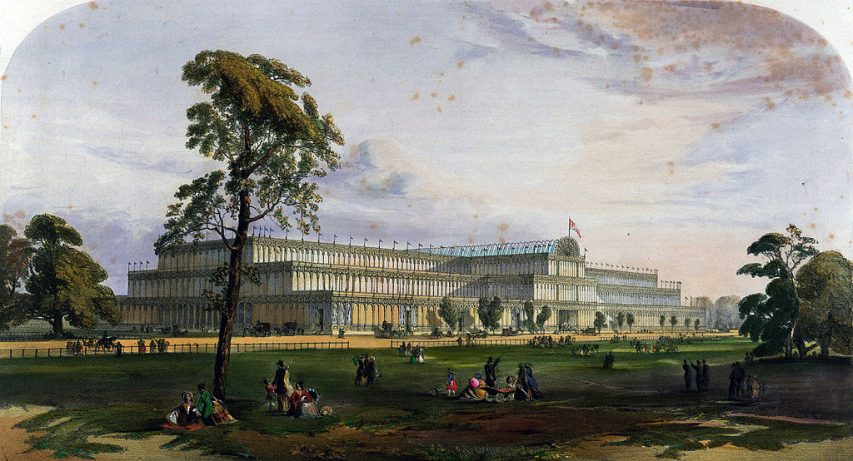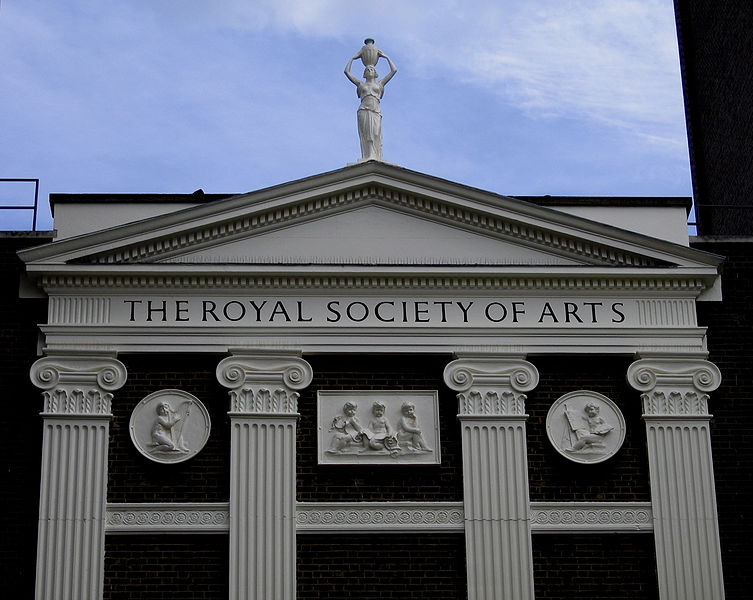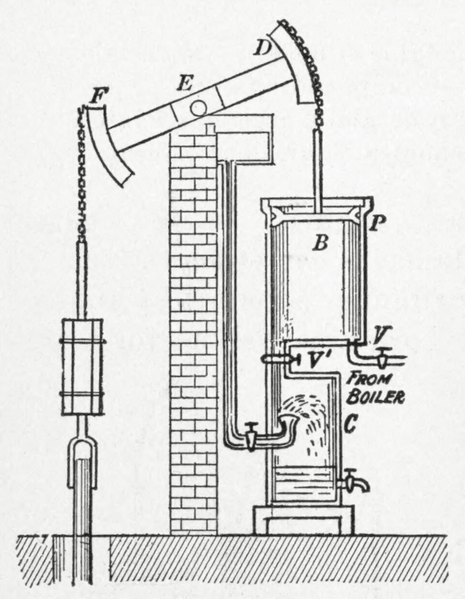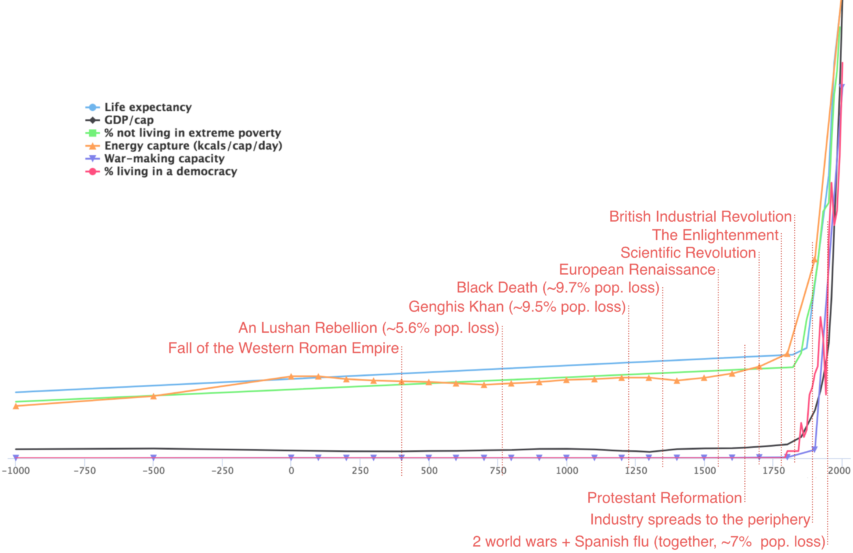Overly Sarcastic Productions
Published 8 May 2020Japan may well have the record for World’s Speediest Industrialization, but how did they accomplish so much so fast without falling victim to Europe’s favorite 19th century pastime of “Colonization”? And how did Japan build up a Pan-Asian empire so darn quickly? All that and more in this deep-dive into the Meiji Restoration!
SOURCES & Further Reading:
Modern Japan: A Very Short Introduction by Goto-Jones.
The Japanese Empire: Grand Strategy from the Meiji Restoration to the Pacific War by Paine.
Bushido: The Soul of Japan by Nitobe.THAT WACKY POLITICAL CARTOON: “Japan Makes Her Debut Under Columbia’s Auspicies” https://tile.loc.gov/storage-services…
This video was edited by Sophia Ricciardi AKA “Indigo”. https://www.sophiakricci.com/
Our content is intended for teenage audiences and up.
PATREON: https://www.Patreon.com/OSP
DISCORD: https://discord.gg/h3AqJPe
MERCH LINKS: https://www.redbubble.com/people/OSPY…
OUR WEBSITE: https://www.OverlySarcasticProductions.com
Find us on Twitter https://www.Twitter.com/OSPYouTube
Find us on Reddit https://www.Reddit.com/r/OSP/
May 9, 2020
History Summarized: The Meiji Restoration
May 3, 2020
The Great Exhibition of 1851
In the latest Age of Invention newsletter, Anton Howes looks at one of the biggest popular events of Queen Victoria’s reign, the Great Exhibition:

The Crystal Palace from the northeast during the Great Exhibition of 1851, image from the 1852 book Dickinsons’ comprehensive pictures of the Great Exhibition of 1851
Wikimedia Commons.
On this day, in 1851, Londoners were finally allowed to enter one of the most spectacular edifices to grace their city. Over the previous months they had watched it spring up in Hyde Park — the largest enclosed structure that had ever been built, and made with three hundred thousand of the largest panes of glass ever produced. Set against the blackened, soot-stained buildings of London, the massive glass edifice gleamed. It soon became known as the Crystal Palace.
Although it no longer exists — it was rebuilt in Sydenham, but the new version burnt down in the 1930s — the fame of the Crystal Palace endures. The same goes for the event that it was originally built for, the Great Exhibition of 1851. But, despite that name-recognition, I’ve found that most people don’t really know what the Great Exhibition was for. Yes, it attracted six million visitors in the space of just a few months — an estimated two million people, almost a tenth of the entire population of Great Britain, most of them returning again and again. But why? I must admit, despite having mentioned the event before in some of my work, I’d never really considered it properly before I started researching the history of the Society of Arts.
The idea of such an exhibition in Britain originated with the Society’s secretary in the 1840s, the civil engineer Francis Whishaw. He had seen the use of industrial exhibitions in France, as a means of catching up with Britain in terms of technology. Every few years since 1798, the French government had held an exhibition of its national industries in Paris. The state paid for everything — a grand temporary building, as well as the expenses of the exhibitors — and the head of state himself awarded medals and cash prizes for the bet works on display. Some of the very best exhibitors were even admitted to the Légion d’honneur, France’s highest order of merit. The benefits to exhibitors were so high that essentially every manufacturer wished to take part. In the days before GDP statistics, the exhibitions were thus an effective means of getting a detailed snapshot of the nation’s manufacturing capabilities. An exhibition served as the nation’s industrial audit.
[…]
Although there had been a few local exhibitions of industry in Britain in the late 1830s and early 1840s, there had been nothing on a national scale to rival the French ones. So Francis Whishaw began the work of getting the Society to organise such an event — a national exhibition of industry for Britain. His initial plan came to nothing, partly as he left the Society to take another job, but in the late 1840s the project was resurrected by a new member of the Society, a civil servant named Henry Cole. In fact, Cole almost entirely took over the Society in the late 1840s, turning it into an exhibition-holding organisation. It held exhibitions devoted to particular living artists, on ancient and medieval art, on inventions, and especially on industrial design — what Cole liked to call “art-manufactures”. And, at the 1849 national exhibition in Paris, he adopted an idea that had already been floated for some years by French officials: an international exhibition, to show the industry of all nations.
This was the crucial step. The idea of an international exhibition of industry appealed to the free trade movement in Britain, which had achieved success in the 1840s with the abolition of the Corn Laws. By displaying the products of other nations, the argument went, British consumers would demand that they be able to buy them more cheaply. And free trade would hopefully bring an end to war, too. Free trade campaigners argued that the productive classes of rival nations competed peacefully, simply by trying to outdo one another in the quality and quantity of what they produced. It was the landed aristocracy, they argued, who let the competition become violent, feeding their pride by causing destruction. Thus, a grand exhibition of the products of all nations — the Great Exhibition — would be a physical manifestation of free trade and international harmony: a “competition of arts, and not of arms”.
The Great Exhibition thus had many roles. It was partly born of national paranoia, about French industrial catch-up, as well as about Britain being the first to hold such an event. It was also about exciting competitive emulation between manufacturers, showing consumers what they did not know they wanted, and achieving world peace and free trade. It certainly spurred on dozens of examples of international cooperation. In fact, just the other day I discovered that the first international chess tournament was held in London to coincide with the exhibition. And it served as an audit of the world’s industries, allowing people to judge who was ahead and who was behind. It thereby gave domestic reformers the ammunition to push for changes in areas where Britain seemed to be falling behind, in areas like education, intellectual property, and design. But more on those another time.
April 24, 2020
Prizes, patents, and the Society of the Encouragement of Arts, Manufactures and Commerce
In the most recent Age of Invention newsletter, Anton Howes explains why the Society of the Encouragement of Arts, Manufactures and Commerce (now the Royal Society of Arts) wasn’t a fan of the British patent system and preferred to award prizes in areas that were unlikely to generate monopoly situations:

The back of the Royal Society of Arts building in London, 25 August 2005.
Photo by C.G.P. Grey (www.CGPGrey.com) via Wikimedia Commons.
… the Society’s early members had an aversion to monopolies, and patents are, after all, temporary monopolies. But there was actually a more practical reason to not give rewards to patented inventions. In fact, quite a few active members of the Society were themselves patentees, and patents for inventions were not generally lumped together for condemnation with practices like forestalling and engrossing. The practical reason for banning patents was that there was no point giving a prize for something that people were already doing anyway. Patents were expensive in the eighteenth century — depending on how you account for inflation, it could cost about £300,000 in modern terms to obtain one — so the fact that there was a patent for a process was a clear indication that it might be profitable. The Society, by contrast, was supposed to encourage things that would not otherwise have been done.
Thus, when a patent had already been granted for a process the Society had been considering giving a premium for, it purposefully backed down — not because the prize would infringe on the patent, but because its encouragement was no longer necessary. And so the effect of the ban on patented inventions was that the Society received, even unsolicited, exactly the kinds of inventions that there was less monetary incentive to invent. Occasionally, this meant trivial improvements — minor tweaks, here and there, to existing processes. An engineer might patent one invention, but not see it worth their time patenting another — through the Society’s prizes, they might at least get a bit of cash for it, or some recognition. The improvement would also be promoted through the Society’s publications. Or, the Society received inventions that were far from trivial, like the scandiscope for cleaning chimneys [here], but which were not all that profitable: inventions that saved lives, or had other beneficial effects on the health and wellbeing of workers and consumers. And finally, the Society received innovations that could not be patented, such as agricultural practices and the opening of new import trades. In the early nineteenth century the Society awarded its prizes to a whole host of naval officers, including an admiral, who came up with flag-based signalling systems between ships — early forms of semaphore.
Another effect of the ban on patents was that the Society also attracted submissions from different demographics. Many of its submissions came from people who were too poor to afford patents, as well as from those who were too rich — wealthy aristocrats for whom commercial considerations might seem vulgar. The poor would generally go for the cash prizes, and the aristocrats for the honorary medals. And the prizes were used by people who might otherwise be socially excluded from invention. In 1758, for example, the Society instructed its members in the American colonies to accept submissions from Native Americans. It also allowed women to claim premiums (just as it allowed them to be members). My favourite example is Ann Williams, postmistress at Gravesend, in Kent, who won twenty guineas from the Society in 1778 for her observations on the feeding and rearing of silk-worms. She kept them in one of the post-office pigeon-holes, referring to them affectionately as “my little family” of “innocent reptiles”. Unlike other elements of society, the Society of Arts accepted, as she put it to them, that “curiosity is inherent to all the daughters of Eve.”
The Society thus encouraged the kinds of inventions that might not otherwise have been created, and catered to the kinds of inventors who might not otherwise have been recognised. Rather than competing with the patent system, it complemented it, filling in the gaps that it left. The Society operated at the margins, and only at the margins, to the better completion of the whole. It found its niche, to the benefit of innovation overall.
April 15, 2020
The Industrial Revolution and the Society for the Encouragement of Arts, Manufactures and Commerce
In the latest from Anton Howes’ Age of Invention newsletter, we are introduced to the Society for the Encouragement of Arts, Manufactures and Commerce:

The London Sweep (from a Daguerreotype by BEARD).
Image from London labour and the London poor : a cyclopaedia of the condition and earnings of those that will work, those that cannot work, and those that will not work, 1851, via the Wellcome Collection.
When we think of the British Industrial Revolution, the image that springs to mind tends to be of soot-belching factories and foundries, of child labour and squalid cities. The inventors who spring to mind tend to be James Watt and his steam engines, or Richard Arkwright and his cotton-spinning machines. But what people tend to forget is that the Industrial Revolution was unleashed by a much broader tide of accelerating innovation — as I never tire of repeating, it touched everything from agriculture to watchmaking, and everything inbetween. Just as some inventors pioneered the use of factories, other inventors sought solutions to industrialisation’s social ills.
Last time, I mentioned the Society for the Encouragement of Arts, Manufactures and Commerce, set up in 1754 in a London coffee house (the Society of Arts for short). What’s so fascinating about the organisation — which still exists today, now called “Royal” — is that it was closely involved with many of the more socially-oriented innovations of the period. By this, I mean the kinds of inventions that were rarely immediately profitable, but which aimed to save lives, to alleviate suffering, or to remedy some other social ill. The Society advertised premiums — cash prizes or honorary medals — for solutions to the problems that its members identified. And it offered similar rewards, which they called bounties, for unsolicited inventions.
It awarded a bounty of fifty guineas and a gold medal to Henry Greathead, for example, one of the claimants for the invention of the lifeboat. It gave another fifty guineas to a sergeant of the Royal Artillery, John Bell, for a method of firing a rope and grapple by mortar from a ship to the shore, to save people on board from shipwreck during storms. (Some years later, it even gave a gold medal to another inventor for a device that did the opposite, firing from shore to ship.) The Society awarded a medal to a Sheffield schoolmaster, John Hessey Abraham, for a magnetic apparatus that would prevent metal dust getting into the eyes and lungs of workers employed in grinding the points of needles. And in 1767 it awarded a bounty to a clockmaker, Christopher Pinchbeck, for a safer crane — cranes at the time were like gigantic hamster wheels, but for humans. When lines snapped, the results could be fatal, so Pinchbeck added a pneumatic braking mechanism.
The list goes on — in all, over the course of about a century, the Society of Arts awarded over two thousand premiums and bounties for inventions. But there is one that really stands out: a premium for the invention of a mechanical means of cleaning chimneys. With such an invention, the Society hoped to abolish the employment of children, sometimes as young as 4, who were forced to climb up inside chimneys in order to clean them. These children were sometimes abducted by the master chimney sweeps, and frequently perished in horrific accidents or of soot-induced cancers. Strikingly, the use of climbing boys was thought to be unique to Britain — the “peculiar disgrace of England” as the campaigners put it (though I don’t think this was quite true). The Society’s idea was that if a technological replacement could be found, then the case for outright abolition could be made — they wanted to create a machine to take the children’s jobs.
The Society of Arts played its role with the offer of a premium, but it acted alongside another campaign run by a few of its members, who ran the snappily titled “Society for Superseding the Necessity of Climbing Boys, by Encouraging a New Method of Sweeping Chimnies, and for Improving the Condition of Children and Others Employed by Chimney Sweepers”, founded in 1803 at the London Coffee-House on Ludgate Hill. Let’s call it the SSNCB for short. There had been earlier campaigns to abolish the use of climbing boys, one of the most prominent being run by Jonas Hanway (a prominent philanthropist, also a member of the Society of Arts, whose various claims to fame include being the first man in London to sport an umbrella). But the 1803 campaign was to prove the most successful, drawing on wider political support. The SSNCB’s key members included William Wilberforce, who later became famous for his zeal in abolishing the slave trade.
February 14, 2020
Innovation and the “low-hanging fruit”
In the latest Age of Invention newsletter, Anton Howes wonders about the “low-hanging fruit” theories on innovation and why some things that seem obvious in hindsight took so long to be noticed:
A theme I keep coming back to is that a lot of inventions could have been invented centuries, if not millennia, before they actually were. My favourite example is John Kay’s flying shuttle, one of the most famous inventions of the British Industrial Revolution. It radically increased the productivity of weaving in the 1730s, but involved simply attaching a little extra wood and string. It involved no new materials, was applied to the weaving of wool — England’s age-old industry — and required no special skill or science. Weaving had been “performed for upwards of five thousand years, by millions of skilled workmen, without any improvement being made to expedite the operation, until the year 1733”, was how Bennet Woodcroft — one of the nineteenth century’s most important historians of technology — put it. (Lest you doubt that description of Woodcroft, he was, in addition to being an inventor himself, the man who compiled and categorised England’s entire patent record up to 1852, and who collected the inventions that would later form the basis of London’s Science Museum, particularly some of the earliest steam engines — among the most important machines in human history — that grace its engine hall today. My hero!) Weavers had been around for millennia, as had shuttles: one is even mentioned in the Old Testament (“My days are swifter than a weaver’s shuttle, And are spent without hope”). As a labour-saving invention, Kay’s flying shuttle was even technically illegal.
I keep coming back to this example, because it goes against so many common notions about the causes of innovation. When it comes to skill, materials, science, institutions, or incentives, none of them quite seem to fit. But I keep seeing more and more such cases. There’s the classic example, of course, of suitcases with wheels — why so late? Was the bicycle another candidate?
It strikes me as odd, too, that there was an explosion of signalling systems like semaphore only towards the end of the eighteenth century. Although there were some seventeenth-century precursors, the main telegraphing systems in Europe seem to have been as crude as Gondor’s lighting of the beacons, capable only of communicating a single pre-agreed message. Ancient China at least had its smoke signals, as did many indigenous American societies, and apparently the ancient Greeks too. So what took semaphore so long to take off? Many of the eighteenth-century systems did not even need multicoloured flags, my favourite being Lieutenant James Spratt’s “homograph”, subtitled “every man a signal tower”, which involved just a long white handkerchief.
The economist Alex Tabarrok calls these cases “ideas behind their time“. I tend to just call them low-hanging fruit. Hanging so low, and for so long, that the fruit are fermenting on the ground. I now see them everywhere, not just in history, but today — probably at least one per week.
December 20, 2019
Anton Howes on the “improving mentality” of the British industrial revolution
In the latest Age of Invention newsletter, Anton Howes looks at some of the “bottom-up” educational initiatives that helped create and shape the industrial revolution:
I stumbled across a speech the other day, delivered by Dr Olinthus Gregory — the mathematics teacher at the Royal Military Academy at Woolwich — to the Deptford Mechanics’ Institution. The mechanics’ institutions, or institutes, were created by working men pooling their savings to pay for lectures, libraries, educational equipment, news-rooms, and book clubs. They spearheaded Britain’s bottom-up approach to adult education, with the classes held in the evenings after work. But they’re a story for another time.
Diagram of a Watt steam engine from Practical physics for secondary schools (1913).
Wikimedia Commons.What caught my eye was Gregory’s speech. Delivered in 1826, Britain’s industrial prowess was already obvious to many. The Industrial Revolution was already in full swing. Gregory paints the picture perfectly:
Agriculture, manufactures, commerce, navigation, the arts, and sciences, useful and ornamental, in a copious and inexhaustible variety, enhance the conveniences and embellishments of this otherwise happy spot. Cities thronged with inhabitants, warehouses filled with stores, markets and fairs with busy rustics; fields, villages, roads, seaports, all contributing to the riches and glory of our land.
But there was more to be done. After all, everything can always be improved (an attitude that I call the improving mentality):
Recollect farther, that every natural and every artificial advantage is susceptible of gradual progression, and trace the yearly elevation to higher perfection. New societies for improvement … new machines to advance our arts and facilitate labour; waste lands enclosed, roads improved, bridges erected, canals cut, tunnels excavated, marshes drained and cultivated, docks formed, ports enlarged: these and a thousand kindred operations which present themselves spontaneously to the mind’s eye, prove that we have not yet attained our zenith, and open an exquisite prospect of future stability and greatness.
Progress had been made, but there was always room for more.
As for the causes, Gregory had some interesting observations. Important, he said, was coal: “more valuable to us than the gold mines ever were to Spain, since without these the various metals could not be worked, and half our manufactories would be at a stand.”
But coal alone was not enough. There would be less output, of course, but he did not say that progress would have been stifled altogether (which is also more or less my own position). Also important was that inventors could persuade the government of the benefits of innovation, which is something I mentioned in my last email. As Gregory put it, Britain had “a government of whom the arts and sciences never crave audience in vain.”
And most important of all was Britain’s community of inventors and scientists, from the Boultons and Watts and Smeatons and Arkwrights and Bramahs, to the Donkins, Hornblowers, Trevithicks, Maudslays and Stephensons (only a few of whom are at all heard of today) …
November 9, 2019
History of Space Travel – Revolutions – Extra History – #2
Extra Credits
Published 7 Nov 2019Start your Warframe journey now and prepare to face your personal nemesis, the Kuva Lich — an enemy that only grows stronger with every defeat. Take down this deadly foe, then get ready to take flight in Empyrean! Coming soon! http://bit.ly/EHWarframe
As the Renaissance breathes new life into Europe, Copernicus develops mathematical proofs for the sun resting in the center of the universe. And from his works, a new world is born. The scientific world gets faster and faster. Revolutions of all kinds begin to set off chains of events that reshape human history. And as science improves, so do the tools of war. Both will be necessary to propel humanity to the stars. Join us on this race through the scientific works between the Renaissance and the Industrial Revolution.
Copernicus’ publishing really came down to the wire! Legend has it that he was given the final printed pages on his death bed. When they presented him with the book, he awoke from a coma, saw his life’s work and finally passed away in peace. Or so the story goes.
October 17, 2019
England in 1550 was a remarkably unpromising location for the later industrial revolution
Anton Howes, in his investigations on the Industrial Revolution looks back in time to see where or even if England deviated from the rest of Europe in ways that made the revolution possible, thinks he’s located the crucial time:
If a peaceful extraterrestrial visited the world in 1550, I often wonder where it would see as being the most likely site of the Industrial Revolution – an acceleration in the pace of innovation, resulting in sustained and continuous economic growth. So many theories about why it happened in Britain seem to have a sense of inevitability about them, but our extraterrestrial visitor would have found very few signs that it would soon occur there. There were many better candidates, on a multitude of metrics.
[…]
But England in 1550 was by global standards quite poor. Historical GDP per capita measures are notoriously difficult to obtain, even for some countries in the twentieth century let alone the sixteenth. The historical GDP per capita of England – by far the most studied region – is still hotly debated among economic historians. Nonetheless, according to the most recent collection of estimates – the Maddison project’s database of 2018 – in 1550 our extraterrestrial visitor would have been much more interested in Belgium. England at that stage lagged behind almost all of the areas for which we have estimates: Holland, Spain, Italy, Sweden, and France. In 1600, it was behind Portugal and India. Here are the figures in 2011 dollars; the colours are by row:
Such estimates should of course be taken with a hefty boulder of salt. (Note, also, that these particular figures, called “CGDPpc”, are something of an innovation by the team compiling the Maddison Project Database – they use multiple benchmarks to improve how we compare countries’ relative incomes in any particular year, which comes at the cost of not being able to compare their growth rates, for which there are separate figures. In other words, you should read the figures by row, not by column.) But it is worth noting that the more recent research on historical GDP per capita, finally filling in some details for regions other than England and Holland, often results in those other countries seeming richer in the sixteenth and seventeenth centuries. The more we know, the more the traces of an early English divergence seem to disappear.
Even without access to such statistics, however, our visitor would have noticed that in the mid-1550s England suffered severe food shortages. Indeed, the threat of famine would be present right up until the beginning of the eighteenth century: there was a major famine in the north of England in 1649, and even a famine in the 1690s that killed between five and fifteen percent of Scotland’s population. Britain would one day become perhaps the first famine-free region, but that did not occur until much later, when innovation had already begun to accelerate. It may even have been its result.
And England in 1550 was not just poor; it was also weak. If our visitor thought, as some historians do, that conquest and exploitation were essential for future growth, then it was Spain that had the major overseas empire, followed by Portugal. England in 1550 had no colonies in the New World, and its attempts to found them all failed until the seventeenth century, by which stage the Dutch and French had also begun to extend their own empires too. It was not until the eighteenth century that Britain began to exceed them.
October 8, 2019
Anton Howes on innovation
Anton Howes publishes a newsletter on the Age of Invention (I just signed up to start receiving it). Here’s an older article from the newsletter on innovation:
The Industrial Revolution was caused by an acceleration of innovation. But how was that acceleration caused? Most theories of the acceleration’s causes assume that innovation is in human nature, that it has always been around.
So, they might argue:
- Property rights became better enforced so budding innovators felt more secure to make themselves known.
- Patents appeared so innovators could reveal their secrets and still profit from them.
- Brits were particularly skilled or well-educated so innovators could more easily get their innovations implemented.
- British society started to accord dignity or honour to innovation so innovators felt motivated to have a go.
- Demand increased so innovators had a big enough market to begin selling their innovations.
And so on. All of these arguments assume the same thing — that innovation is a part of human nature, a choice that has always been recognised. Their implicit claim is that, other than in mid-eighteenth century Britain, save for a few short-lived cases, choosing innovation was simply just not worth it.
I disagree.
The more I study the lives of British innovators, the more convinced I am that innovation is not in human nature, but is instead received. People innovate because they are inspired to do so — it is an idea that is transmitted. And when people do not innovate, it is often simply because it never occurs to them to do so. Incentives matter too, of course. But a person needs to at least have the idea of innovation — an improving mentality — before they can choose to innovate, before they can even take the costs and benefits of innovation into account.
An illustration: at a conference I was at last month the attendees wore lanyards with name tags, which listed their names on one side. Over the course of the conference the tags would inevitably flip over, hiding the names. People would, when introducing themselves, periodically check each other’s tags, flipping them the right way around. But only one person — one single person, of attendees in the hundreds, had the ingenuity to write their name on the other side. To my shame, it wasn’t me.
Everyone at that conference had an incentive to do that innovation. Everyone was there to meet one another, so the innovation helped achieve that goal. And the cost of the innovation was negligible. It took a couple of seconds to whip out a pen and scribble a name. It simply did not occur to them to innovate. Innovation can be extraordinarily rare — despite the opportunities, despite the incentives.
September 28, 2017
A very different kind of “hockey stick” – everything sucked until the industrial revolution
Steve Kates linked to this post at Luke Muehlhauser’s blog, showing another graph with a hockey stick pattern, but it isn’t one of the IPCC’s misleading bits of propaganda:
In How big a deal was the Industrial Revolution?, I looked for measures (or proxy measures) of human well-being / empowerment for which we have “decent” scholarly estimates of the global average going back thousands of years. For reasons elaborated at some length in the full report, I ended up going with:
- Physical health, as measured by life expectancy at birth.
- Economic well-being, as measured by GDP per capita (PPP) and percent of people living in extreme poverty.
- Energy capture, in kilocalories per person per day.
- Technological empowerment, as measured by war-making capacity.
- Political freedom to live the kind of life one wants to live, as measured by percent of people living in a democracy.
- (I also especially wanted measures of subjective well-being and social well-being, and also of political freedom as measured by global rates of slavery, but these data aren’t available; see the report.)
Anyway, the punchline of the report is that when you chart these six measures over the past few millennia (data; zoomable), you get a chart like this (axes removed for space reasons):
(And yes, there’s still a sharp jump around 1800-1870 if you chart this on a log scale.)
Basically, if I help myself to the common (but certainly debatable) assumption that “the industrial revolution” is the primary cause of the dramatic trajectory change in human welfare around 1800-1870, then my one-sentence summary of recorded human history is this:
Everything was awful for a very long time, and then the industrial revolution happened.
March 12, 2017
Reasons for THE INDUSTRIAL REVOLUTION
Published on 26 Feb 2015
The Industrial Revolution transformed and shaped our modern world as we know it. Why did the fundamental changes of the Industrial Revolution begin in Great Britain? In our first episode about the era of Industrial Revolution, Brett explains how the agricultural revolution, a few inventions in the textile industry, the steam machine, improving means of transport and an overall changing society created a solid basis for the coming changes of the late 18th century.
March 4, 2017
Let There Be Light – The Invention Of The Light Bulb I THE INDUSTRIAL REVOLUTION
Published on 20 Feb 2015
Welcome to IT’S HISTORY! We are kicking off this new history channel by taking you on a journey through the Industrial Revolution. In our first episode about INVENTIONS, Brad Explains everything about the history of the light bulb – it was a long way from the discovery of fire till the first electrical lightning. Learn who else, besides Thomas Alva Edison and Nikola Tesla helped form the technology that illuminates our nights to this day!
November 18, 2015
Adam Smith – The Inventor of Market Economy I THE INDUSTRIAL REVOLUTION
Published on 22 Feb 2015
Adam Smith was one of the first men who explored economic connections in England and made clear, in a time when Mercantilism reigned, that the demands of the market should determine the economy and not the state. In his books Smith was a strong advocator of the free market economy. Today we give you the biography of the man behind the classic economic liberalism and how his ideas would change the world forever.
May 21, 2015
The Brunel Museum
Brid-Aine Parnell talks about the Brunels — father, son, and grandson — and their impact on Britain during the industrial revolution:
When you mention Brunel to most people, they think of the one with the funny name – Isambard Kingdom Brunel. A few folks will know that his father Marc Isambard Brunel was the first famous engineering Brunel, but not many will know that Isambard’s own son, Henry Marc Brunel, was also an engineer and finished some of Isambard’s projects after his death.
Between the three of them, the Brunels created landmarks all over the UK; perhaps most famously the Clifton Suspension Bridge, which spans the Avon Gorge, linking Clifton in Bristol to Leigh Woods in Somerset.
That bridge, which Isambard Kingdom Brunel designed and often called his “first child,” wasn’t actually completed until after his death and only came about at all because Isambard was nearly drowned in an accident at the massive project he was working on in London with his father: the Thames Tunnel.
It is this masterpiece of engineering, which invented new methods of tunnelling underground and is why the Brunels are credited with creating underground transportation – and by extension, the modern city itself – that you see if you go along to the Brunel Museum in Rotherhithe, London.
The museum itself is in Marc Brunel’s Engine House, built in 1842, the year before the Thames Tunnel was opened, for the engines that pumped to keep the Tunnel dry. The small exhibition tells the story of the design and construction of the 396-metre-long tunnel, the first to have been successfully built underneath a navigable river. The display panels also detail the innovative tunnelling shield technique invented by Marc and Isambard that’s still used to build tunnels today, although these days it’s machines doing the hard work instead of men. Back then, labourers would spent two hours at a time digging, often while also being gassed and showered with shit.
The River Thames at that time was the sewer of London and the tunnel was constantly waterlogged, leading to a build up of effluent and methane gas. The result was that not only would miners pass out from the gas – even if they didn’t, men who re-surfaced were left senseless after their two-hour shift – but there were also explosions as the gas was set alight by the miners’ candles.
Although it’s a tidy and well-kept little exhibition, it is not really why you come to the museum. You come for the underground chamber below, which was only opened up to the public in 2010 after 150 years of being closed off by the London transportation system. This is the Grand Entrance Hall to the Thames Tunnel, used in Brunel’s day as a concert hall and fairground and now in the process of being turned into a permanent exhibition.
December 16, 2014
Anton Howes on what caused the industrial revolution
In the first post at his new blog, Anton Howes lays out one of the biggest questions about the 19th century:
What caused the Industrial Revolution?
By the term “Industrial Revolution”, the broadly accepted meaning is of (1) innovation-led, (2) sustained and (3) replicable economic growth.
Each of those adjectives are the source of some of the other important questions in the social sciences. Here are some brief summaries of the issues at hand, which I’ll maybe expand upon separately.
(1) Innovation-led
Innovation-led growth distinguishes itself hugely from what we might call ‘Ricardian’ or ‘Malthusian’ economic growth (it’s usually called ‘Smithian’, but that’s a topic for another time). Capital accumulation, population growth, conquest, and education, can all result in initial surges of economic growth. But this is soon brought to a standstill by the brutal reality of diminishing marginal returns, depreciation, and food shortages.
[…]
(2) Sustained
Innovation existed before the Industrial Revolution. Of course it did – you need look no further than the invention of agriculture, writing, bronze, crop rotations, horse collars, windmills, gunpowder, printing presses, paper, and bills of exchange to know that innovations have occurred throughout history before the IR.
The difference is that these were few and far between. Some of them, often grouped together, resulted in Golden Ages, or “Efflorescences” as Jack Goldstone likes to call them. The 1st Century early Roman Empire; the 8th Century Arab World; 12th Century Sung Dynasty China; the 15th Century northern Italian city-states; and 17th Century Dutch Republic are all good examples.
[…]
(3) Replicable
Perhaps most importantly, this miracle quickly spread. First to Belgium, across the Atlantic to the new-born USA, and then to the Dutch Republic still winding down from its own Golden Age, France, Northern Italy, and the multitude of German principalities.
In the last Century it spread to Japan, South Korea, Singapore, Hong Kong, China, Vietnam and Eastern European countries escaping the shadow of Communism.
In this Century it appears to finally be taking root in various African countries. Kenya, Tanzania and Rwanda in particular seem to be leading the way.
The more recent recipients of the IR are experiencing an unprecedented rate of growth, which in itself provides a further miracle in economic history. Britain’s sustained growth only initially manifested itself at less than 1% per year. It took about 100 years for Britain’s first doubling in GDP to occur.
More recent recipients can expect to grow at 7-10% every year, and sometimes even higher. To put that in perspective, growth at 7% per year would result in a doubling of the size of the economy in only 10 years. 10% a year in only 7 years.










